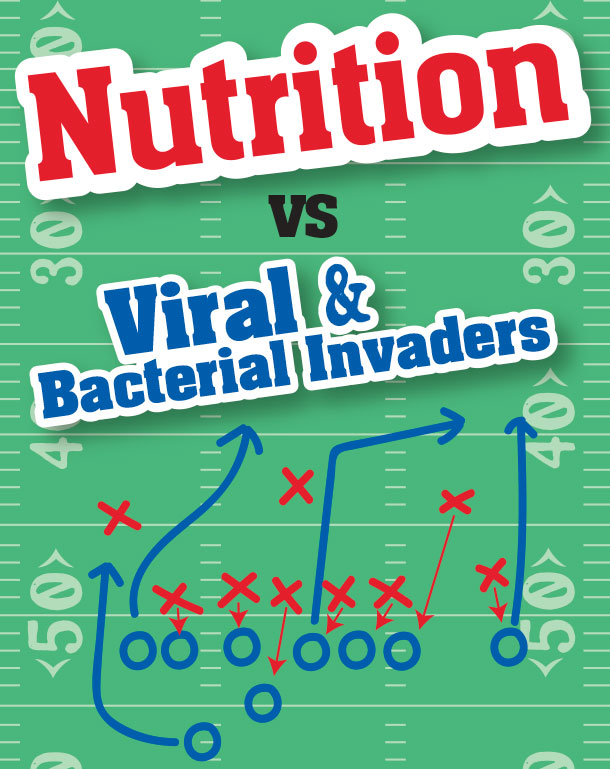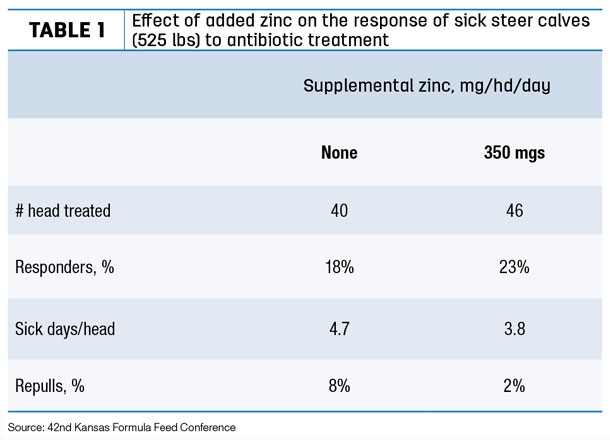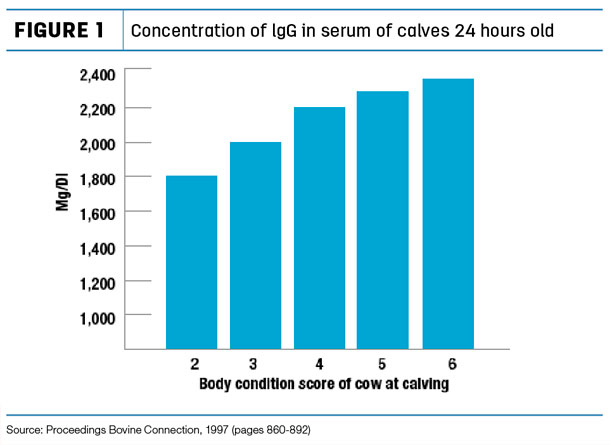Maybe you’ve also heard those nutrients help in supporting immunity and the vaccination program developed with the help of your veterinarian. Perhaps you are concerned with maintaining hoof health, eye health, new cattle getting off to a good start or calves being born strong and thrifty, having the benefit of quality colostrum from their mother.
In a nutshell, you are providing nutrients, not only for your cattle but also for that mysterious thing called the immune system. But how exactly does it work?
As a 5-year-old, I was put on a big, beautiful quarter horse gelding and was king of the hill for about 10 minutes. Soon, my body was covered with welts, my eyes swelled shut, and I couldn’t breathe. A key immune cell had overreacted to antigens associated with that horse. What was a near-fatal experience turned into a fascination with the immune system and its power.
Much has been written describing the basics of immunity. Few who devote their lives to the research and study of the immune system profess to be an authority on the subject because of its complexity and how much there is yet to be discovered. But when it comes to cattle, here’s what we know: There are two basic branches of immunity in your cattle – nonadaptive and adaptive.
The first line of defense
The nonadaptive branch is the first line of defense and is always on guard for viral or bacterial invaders. This includes the physical barrier of the skin and mucus membranes of the lungs, bronchial area and gut (just like the wall of a fort or castle).
 Key immune cells called phagocytes are also part of this branch, whose job is to scour the body “eating” and killing any invader. Certain antibodies are also present to capture the “bad guys,” carrying them to eating cells or out of the body.
Key immune cells called phagocytes are also part of this branch, whose job is to scour the body “eating” and killing any invader. Certain antibodies are also present to capture the “bad guys,” carrying them to eating cells or out of the body.
In cattle respiratory disease, often the virus (infectious bovine rhinotracheitis, syncytial, etc.) damages this physical barrier, allowing bacteria to gain a foothold in the lungs, which is why your vaccination program is critical. Some viruses can actually suppress immunity if they gain a foothold.
Also, dusty receiving conditions or moldy feed can cause this physical barrier to weaken, leaving open the possibility of infection.
Make sure your diets are adequate in vitamin A and zinc. Vitamin A and zinc help maintain the skin and other physical barriers to infection. Diets should contain 50 to 60 parts per million zinc on a dry matter basis.
The National Research Council recommends at least 22,000 IUs per day of vitamin A for a 1,000-pound feedlot steer, 33,000 IUs per day for a 1,200-pound dry pregnant cow, and 46,000 IUs per day for a lactating cow.
How it works
Let’s say infectious bovine rhinotracheitis virus attacks your calf. The phagocytes scouring the body are called to the point of attack by a signal called chemotaxis. This signal requires selenium to work. Diets should contain a minimum of 0.3 parts per million of selenium on a dry matter basis, which is the maximum legal concentration.
As the phagocytes work, they engulf or eat the virus and then kill it. If you’ve ever noticed a slight green color of the discharge sometimes associated with an infection, that’s because one method of killing the virus involves the phagocyte making a chlorinated swimming pool which leaks out during phagocytosis.
This should drive home the importance of providing adequate salt or chlorine in the diet.
There are other more potent killing mechanisms in these phagocytes that require copper, zinc and manganese. Some studies have shown that, in a marginal copper deficiency, phagocytes are unable to kill the virus or bacteria it has engulfed.
In general, diets should contain 10 to 15 parts per million of copper on a dry matter basis. In higher-stress situations, such as with receiving cattle, 15 to 20 parts per million copper may be more appropriate.
Diets should be adequately balanced to meet energy and phosphorus needs, as all of these killing systems have a high requirement for both.
Eye health
Many producers are concerned about eye health in their cattle. Often, dusty conditions or tall unclipped pastures cause irritation or a breakdown of the physical innate barrier, leaving the eye area open to invasion by bacteria.
The enzyme lysozyme is also present in eye secretions to degrade invading bacteria. Vitamin A has been shown to stimulate production of this enzyme in addition to helping maintain and strengthen the tissue against invaders.
Hoof health
Hoof health is a concern as well. Bacteria present in the soil and manure, especially in wet conditions, gain a foothold in the soft tissue of the hoof. Often, physical damage to the hoof from such things as rough terrain, rocks, frozen ground, handling equipment or shipping can predispose cattle to hoof rot.
Organic iodine in the feed has been shown to be helpful, likely due to iodine’s effect on energy metabolism and stimulating key parts of the killing systems within the eating cells. Up to 50 milligrams of organic iodine can be fed daily.
Elevated dietary zinc has been shown to protect against foot issues as well. This is due to zinc’s role in maintaining tissue and hoof integrity to protect against invasion. Researchers at Kansas State University included organic zinc (zinc methionine) in free-choice mineral at the rate of 5.9 grams per head daily and found the incidence of foot rot was reduced from 5.4 percent to 2.5 percent in 600 head of stockers on grass.
It should be clear, but there’s no denying the importance of adequate mineral and vitamin supplementation to support the nonadaptive branch of immunity.
The ‘turned on’ immune system
The adaptive branch is the part of the immune system that responds to your scour or arrival calf vaccination program. Antibodies are produced specific to the antigens present in your vaccine. Other immune cells are primed to neutralize the specific virus or bacteria if it is encountered in the calf or cow.
A fully “turned on” immune cell will make 30,000 antibodies per second. It goes without saying energy and proteins are required to make this happen. Also, vitamin E and selenium promote and often stimulate antibody production.
Zinc has also shown to be helpful (Table 1), partly because of its role in protein production; it has also shown to help the action of immune cells that deal with virus-infected body cells.
 Dietary copper can also increase production of antibodies in response to a vaccination program.
Dietary copper can also increase production of antibodies in response to a vaccination program.
Producers should also make sure an effective deworming program is in place for their cattle. A worm infection can actually stimulate certain subsets of immune cells to “turn on” to suppress immunity.
Body condition
Proper body condition of cows also plays a part in overall calf immunity. Cows calving in average to good condition will tend to have a higher concentration of a critical immunoglobulin antibody known as IgG, which the calf only receives from colostrum (protecting it against diseases such as scours or pneumonia) (Figure 1).
 From birth to maturity, a strong immune system is an animal’s best defense against harmful disease. A proactive and balanced nutrition program can be one of your most valuable offensive plays as you prepare your herd for healthy and productive lives.
From birth to maturity, a strong immune system is an animal’s best defense against harmful disease. A proactive and balanced nutrition program can be one of your most valuable offensive plays as you prepare your herd for healthy and productive lives. ![]()
GRAPHIC: Graphic by Corey Lewis.

-
Randy Dew
- Cargill Animal Nutrition
- Email Randy Dew








